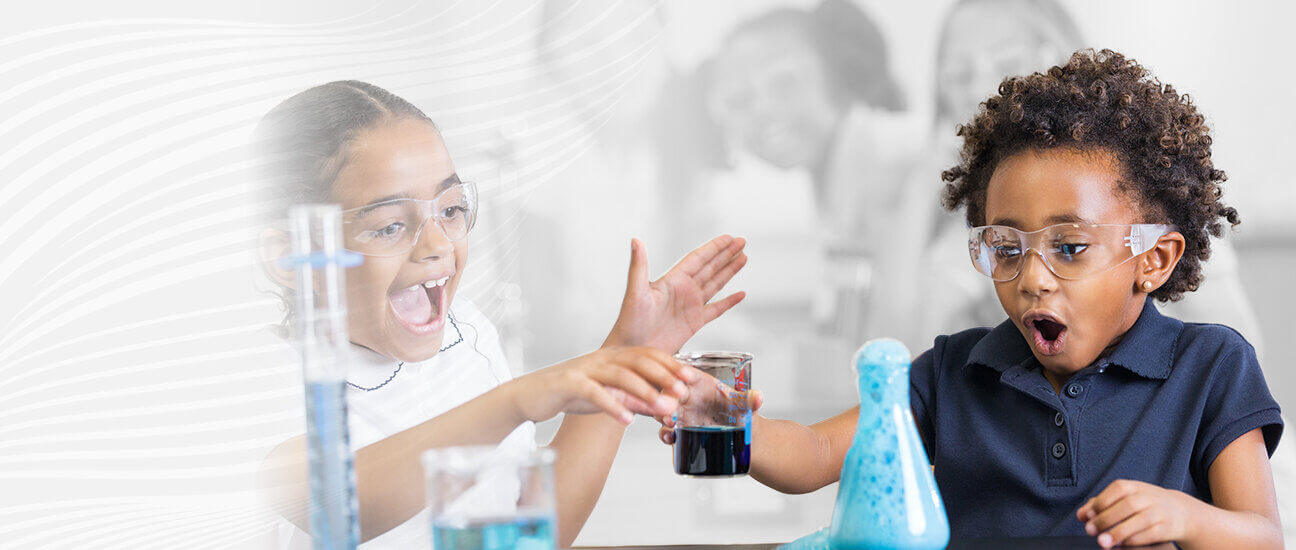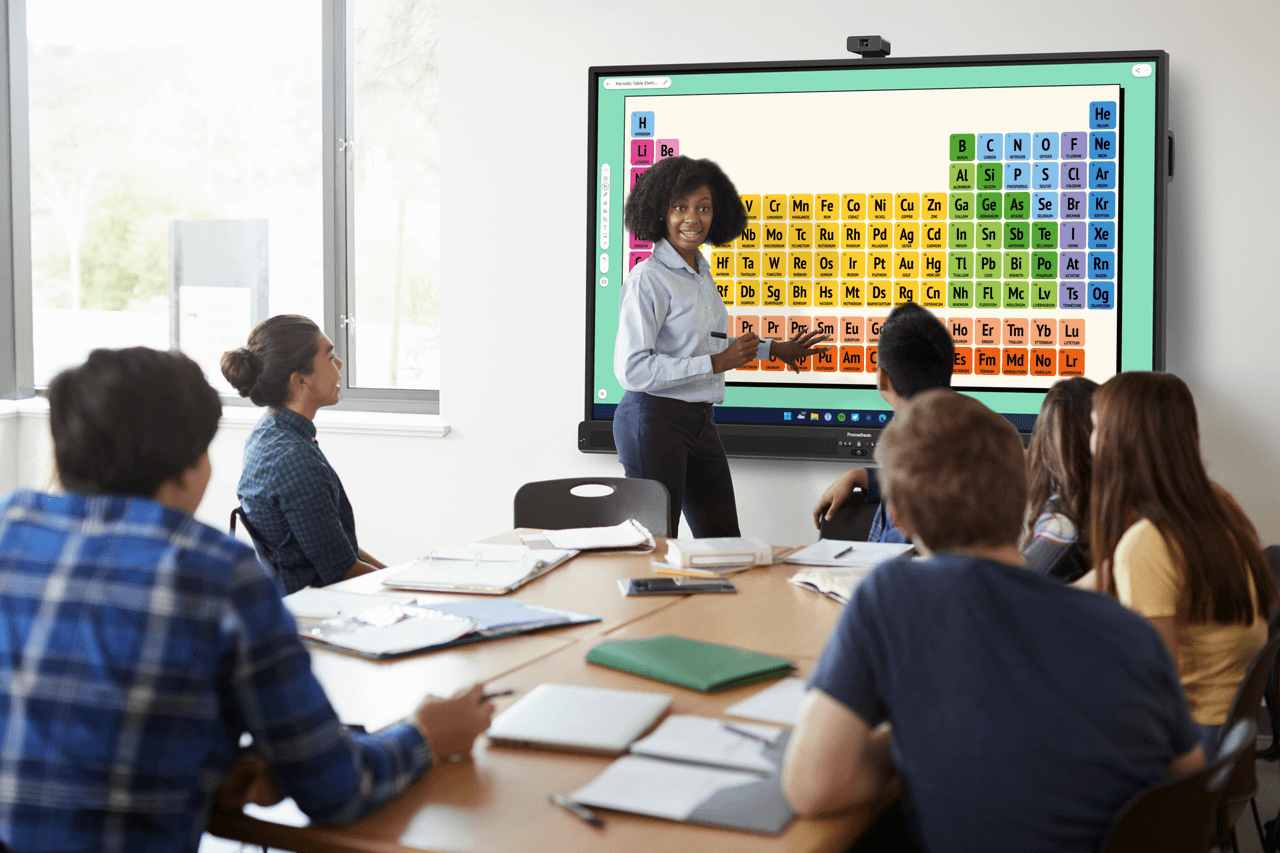Published on December 13th, 2022
What is experiential learning?
10 minute read

Student engagement has always been a priority for educators, especially since the return to the classroom, and experiential learning is a key trend to help. Educators still believe the face-to-face environment is the best place for students to work together and build valuable relationships with their teachers. Now, they’re looking for a teaching approach that’s as reliable and capable of meeting the needs of differentiated students as in-person lessons.
Experiential learning combines traditional principles of education with a modern understanding of the diverse ways students grasp and retain information. This makes it an ideal method of supporting students in the classroom, providing opportunities to use edtech, and improving engagement. As more educators look to integrate experiential learning into their teaching, we explore different approaches and why they’re beneficial for the student experience.
- What is experiential learning?
- Why is experiential learning important?
- Practical learning
- Immersive learning
- Reflective learning
- Using edtech for experiential learning
What is experiential learning?
Experiential learning takes a practical approach to education, while still drawing on traditional ideas of learning by rote. The guiding idea is that students learn best by doing—putting the theory into practice. It works by allowing students to understand and apply concepts through physical activities, such as practicing a skill, building a model, or working through a process. While subjects such as sciences and sports rely heavily on this kind of physical learning, experiential learning applies across curriculum. A crucial difference is that activities are followed by time for reflection, so students analyze how and why they reached a particular outcome.
Experiential learning is also a looser, freer approach that encourages experimentation. Students are able to try out what they’ve been taught and get hands-on with their learning. A teacher doesn’t necessarily have to give prescriptive instructions or a demonstration, but might instead introduce students to the principles and then let them work through the problem or task themselves. The emphasis is always on seeing what happens and learning from the experience itself.
Why is experiential learning important?
This approach allows students to contextualize their learning, lifting it from the pages of a textbook or worksheet. This context makes their education and content less abstract, while building connections with the real world. Students can become more enthusiastic when they see the value and usefulness of a subject. This benefits student engagement, in addition to making them more active learners through the physical activities and experiences.
The practical aspect of experiential learning allows educators to more thoroughly assess students’ understanding by observing that they can correctly apply or perform the principles they’re taught. Rather than simply repeating a theory back, a student has to literally demonstrate a concept or skill. This process can create “lightbulb moments” for students, as they experience an idea or process work in practice. Experimentation can achieve wider goals in all subject matter around learning from success and failure.
Experiential learning also gives students greater flexibility and freedom over their learning format, benefiting those who learn best in a less rigid, formal lesson style. Students appreciate the refreshing change from following repetitive steps, receiving and transcribing information, or having to deliver fixed outcomes, while taking greater ownership of their learning. This approach also stimulates different learning profiles, particularly kinaesthetic, working in a way that helps students better visualize, interpret, and make sense of their content.
At the same time, experiential learning supports social-emotional skills including collaboration, teamwork, and independence. It promotes a healthy open-mindedness that encourages positivity and an eagerness to learn.
Practical learning
Experiential learning broadens lessons beyond reading and writing. Practical activities help students’ comprehension while developing physical skills, such as model-building. Experimentation allows students to investigate a hypothesis, find probabilities, and test reactions. Many students enjoy the quicker pace of learning from seeing an effect and result in real-time. The outcomes don’t just include final products, but also acting and performing to tell a story, express an idea, or explain a concept.
Practical learning is less reliant on a teacher’s method of explaining a concept and many students find it more rewarding to come to conclusions for themselves. It also builds confidence and communication skills, lending itself to both independent and group work. Taking a practical approach helps overcome weaknesses or roadblocks by getting to grips with a challenge in a less theoretical way. Differentiated learners, and those with Special Educational Needs (SEN), can benefit from working with something tangible in front of them.
Immersive learning
Experiential learning also deepens the student experience by immersing them in a particular location, setting, or historical period. This approach treats education as less of a one-way transfer of information by taking a more holistic look at instruction. This can involve changing the classroom configuration for a less static, desk-based format, setting up different work stations for students to explore, or venturing outside.
Finding ways to immerse students in their content helps bring them closer to their learning so they can see how concepts play out in the real world. It enriches their imagination by helping them visualize a theory, as well as stimulating their other senses through auditory and tactile experiences. It can be essential for demonstrating naturally practical subjects such as science, but is useful for clearly showing students the consequences and impact of actions right in front of them.
Reflective learning
Experiential learning aims to excite, energize, and inspire students, but also emphasizes reflection. The approach gives students dedicated time after the activity to digest what they’ve learned, allowing for a more manageable pace. Reflective learning also draws students’ attention to methodology and process. By tracing back the steps involved, they gain a more sophisticated understanding, rather than just what the ideal end result should look like.
Students gain a balanced view of why something didn’t work, so they can see beyond a negative outcome and think in more complex terms than ‘right’ and ‘wrong’. Reflective time also gives students the opportunity to notice commonalities and connections across content and skills, building a more cohesive education.
Using edtech for experiential learning
Education technology diversifies teachers’ opportunities to provide a student experience that is practical, immersive, and reflective. Edtech removes the need to purchase lots of equipment or materials, with virtual simulations and 3D models that students can explore instead. Using a virtual tool benefits experimentation without the worry of wasting or breaking resources, and can be easily repeated at the touch of a restart button.
Edtech can also show students different environments through live-streaming. A smart panel such as the ActivPanel makes this experience more immersive through stimulating, high-quality visuals and sound. This helps educators transport students to different locations, without needing to travel there. Students can also draw diagrams, create videos, or play games on this larger format. Portable devices can be used both inside and outside the classroom, as well as connected together via screen-mirroring, so educators are less restricted to any school limitations.
See these features in action by requesting an ActivPanel demo, or explore experiential learning activities for each subject here.




